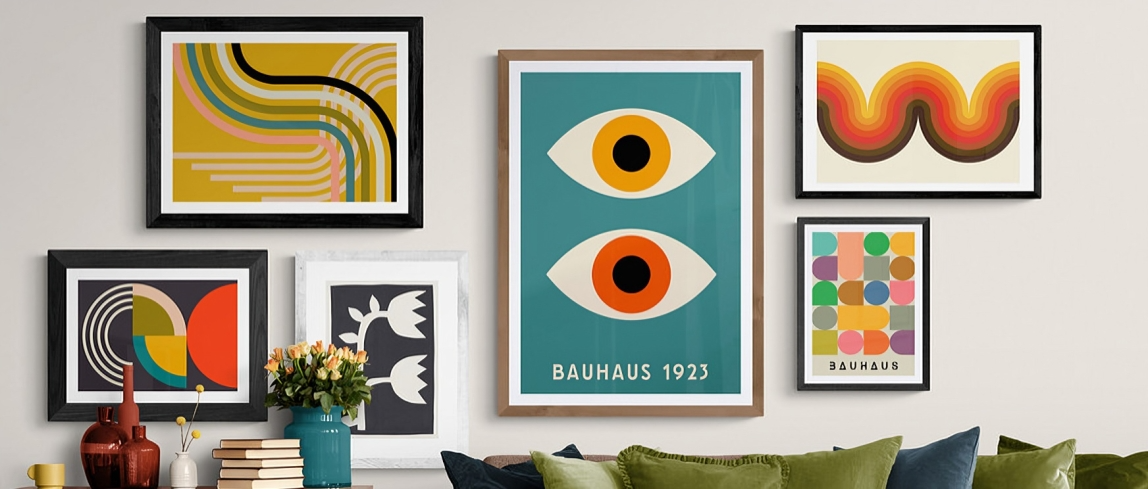
Mid century modernist art is more than just a design movement; it represents a transformative era in creativity. Emerging in the mid-20th century, mid century modernist art embraces simplicity, functionality, and innovation. It has left a lasting impact on interior design, architecture, and everyday objects. From sleek furniture to bold color contrasts, mid century modernist art reflects an era where art met practicality.
Understanding mid century modernist art not only deepens our appreciation for its beauty but also highlights its influence on modern design. In this article, we will explore its origins, key characteristics, and its lasting legacy.
Origins and Influences of Mid Century Modernist Art
Mid century modernist art emerged after World War II as the world sought change and innovation. The movement was heavily influenced by:
- Bauhaus Principles – A focus on functionality, minimalism, and craftsmanship.
- Scandinavian Design – The use of natural materials and simple forms.
- Japanese Aesthetics – Harmony with nature and an appreciation for clean lines.
Designers and artists from this period embraced new materials such as fiberglass and aluminum, combining them with wood and glass to create sleek, modern designs. Key figures like Charles and Ray Eames, George Nelson, and Isamu Noguchi played a crucial role in defining mid century modernist art.
Mid century modernist art also reflected societal changes, with a focus on mass production and affordability. This made high-quality design accessible to a broader audience, influencing furniture, architecture, and even advertising aesthetics.
Key Characteristics of Mid Century Modernist Art
Mid century modernist art is defined by several distinct elements:
- Simplicity and Functionality – Designs focus on usability without unnecessary details.
- Clean Lines and Organic Forms – Shapes are smooth and uncluttered, often inspired by nature.
- Bold Color Palettes – A mix of vibrant and neutral colors creates visual harmony.
- Innovative Materials – The combination of traditional and modern materials enhances durability and aesthetics.
- Nature-Inspired Themes – Designs often incorporate natural elements, blurring the lines between indoors and outdoors.
- Geometric and Abstract Patterns – Many artists and designers used striking geometric motifs to create a modern aesthetic.
These elements create a timeless appeal that remains popular today.
Influence on Architecture and Interior Design
Mid century modernist art greatly influenced architecture and interior design, introducing open spaces and a seamless connection with nature. Key features include:
- Large Windows – Maximizing natural light and outdoor views.
- Minimalistic Interiors – Functional furniture with clean, geometric designs.
- Flexible Living Spaces – Adaptable layouts that accommodate modern lifestyles.
- Integration with Nature – Many homes featured courtyards, indoor plants, and natural wood finishes.
Architects like Richard Neutra and Ludwig Mies van der Rohe championed this approach, creating homes and buildings that emphasized openness and simplicity. The influence of mid century modernist art on home design is still seen today.
Impact on Product Design and Everyday Objects
Mid century modernist art principles extended beyond homes into everyday objects. Some of the notable changes included:
- Furniture Design – Sleek, ergonomic chairs and tables became iconic, including the famous Eames Lounge Chair.
- Home Accessories – Bold-patterned textiles, functional lighting, and geometric decor.
- Kitchenware – Vibrant dishware and stylish appliances made daily tasks more enjoyable.
- Technology and Industrial Design – Radios, televisions, and cars adopted the sleek, futuristic aesthetic of mid century modernist art.
The focus on aesthetics and functionality made mid century modernist art a lifestyle rather than just an artistic style.
Revival and Popularity in Contemporary Design
Today, mid century modernist art has made a strong comeback. This resurgence is fueled by:
- Social Media Influence – Platforms like Instagram and Pinterest showcase mid-century interiors, inspiring new generations.
- Sustainable Design Trends – The emphasis on quality craftsmanship and timeless materials aligns with modern eco-friendly movements.
- Vintage Demand – Collectors and homeowners seek authentic mid-century pieces, reviving their appeal in modern spaces.
- Modern Adaptations – Contemporary designers incorporate mid century modernist art elements into new furniture, architecture, and decor.
Mid century modernist art remains highly desirable due to its versatility and timeless appeal.
Conclusion: A Lasting Legacy
Mid century modernist art is more than a design trend—it is a movement that shaped the way we experience spaces and objects. Its emphasis on simplicity, functionality, and aesthetics continues to inspire architects, designers, and artists worldwide.
As minimalism and sustainability gain traction, mid century modernist art principles remain highly relevant. Whether through furniture, architecture, or product design, mid century modernist art stands as a testament to timeless creativity. By understanding mid century modernist art and its legacy, we can appreciate the profound impact it has on modern living and design.
The influence of mid century modernist art is not just historical; it continues to evolve, inspiring new generations to create, innovate, and rethink the way design interacts with everyday life. Its ability to balance beauty and practicality ensures that mid century modernist art will remain an essential part of artistic and design conversations for years to come.






